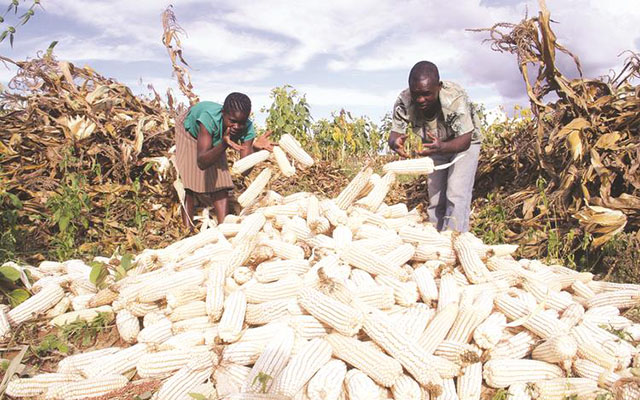Manicaland records biggest grain yields

Rumbidzayi Zinyuke Manicaland Bureau
MANICALAND Province will record its biggest grain yield in decades this year of 270 000 tonnes of maize and 60 000 tonnes of an assortment of small grains.
This will significantly change the food deficit pattern carved by consecutive seasons of poor crop production. According to the latest Zimbabwe Vulnerability Assessment Committee (ZimVAC) report, emergency food assistance by Government also contributed significantly to the food security situation.
This means the livelihood of families in Manicaland, as in most provinces, has significantly improved following the good harvest recorded in the 2016-17 farming season.
This resulted in a reduction in strategies implemented by families to deal with food shortages. According to the report, the Coping Strategy Index (CSI) declined from 27 in 2016 to 15 in 2017.
“This shows improved food access from 2016, which is partly attributable to the emergency food assistance by Government and its partners, as well as the improved main harvest.
“All provinces showed an improvement in the consumption coping strategies employed from the extreme methods adopted last year to the less severe and less frequent coping habits employed this year,” the report reads.
The Coping Strategy Index (CSI) is an indicator used to compare the hardship faced by households by measuring the frequency and severity of the behaviours they engage in when faced with food shortages.
The report notes that when faced with food shortages, as was the case last year, families tend to employ livelihood coping strategies in order to “increase food availability outside of their normal livelihoods”.
These strategies are classified into three categories namely Stress, which includes borrowing money, spending savings, selling assets and more livestock than usual while Crisis includes selling productive assets, withdrawing children from school and reducing non-food expenditure.
The Emergency strategy includes selling one’s land, begging for food and selling the last breeding stock to buy food.
However, nationally, the proportion of households that engaged at least one livelihood based coping strategy in April decreased from 41 percent in 2016 to six percent in 2017.
“This indicates an improved food access situation, which led to less coping than last year where households had experienced two consecutive poor food crop production seasons,” reads the Zimvac report.
The report also states that about 86 percent of households in Manicaland did not adopt or engage any livelihood coping strategies while four percent engaged stress coping strategies.
Three percent and seven percent of households engaged crisis and emergency coping strategies. They did not engage coping strategies mainly because that was not necessary.
Other households did not engage any coping strategy because they did not have any assets to dispose of or they had already disposed of their assets prior to April and could no longer continue to do so.






Comments